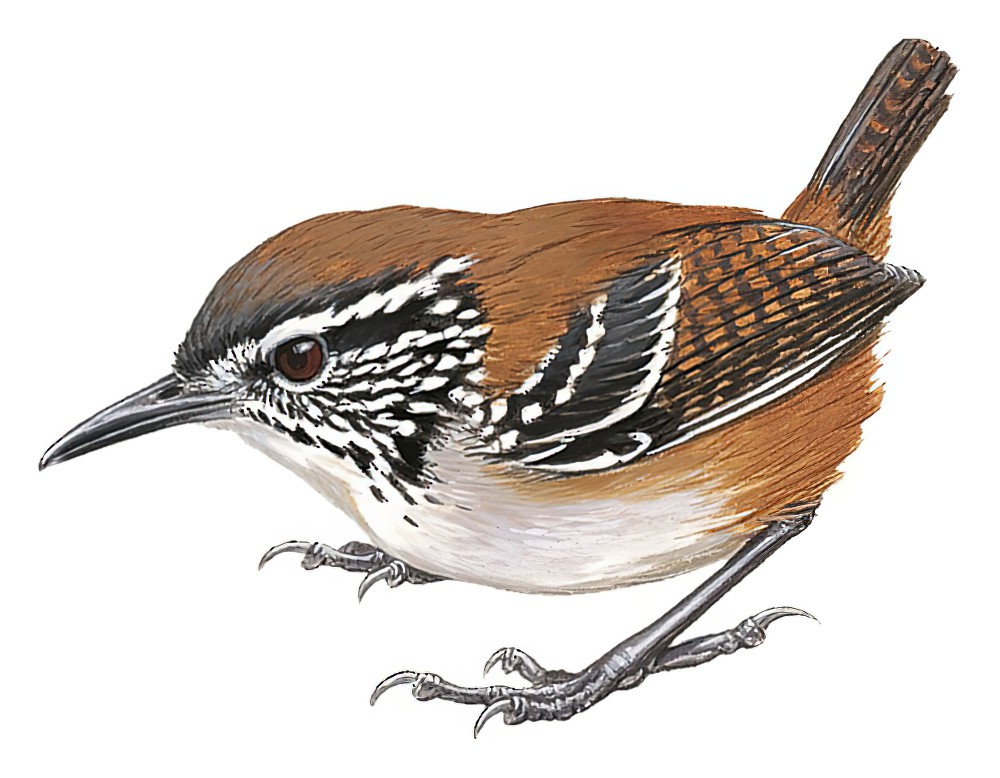Bar-winged Wood-Wren / Henicorhina leucoptera

Bar-winged Wood-Wren
SCI Name:
Protonym: Henicorhina leucoptera Auk 94 p.195-201,front.
Taxonomy: Passeriformes / Troglodytidae / Henicorhina
Taxonomy Code: bwwwre1
Type Locality:
Author: Fitzpatrick, Terborgh & Willard
Publish Year: 1977
IUCN Status: Near Threatened
DEFINITIONS
HENICORHINA
(Troglodytidae; † White-breasted Wood Wren H. leucosticta prostheleuca) Gr. ἑνικος henikos singular; ῥις rhis, ῥινος rhinos nostrils (see Heterorhina); "HENICORHINA LEUCOSTICTA. ... Baird's term Heterorhina for this group having been employed in the Coleoptera by Westwood in 1845, we propose to change it to Henicorhina." (P. Sclater & Salvin 1868); "Henicorhina P. Sclater and Salvin, 1868, Proc. Zool. Soc. London, p. 170. New name for Heterorhina Baird, 1864, preoccupied by Heterorhina Westwood, 1842 (Coleoptera)." (JAJ 2021).
Synon. Heterorhina.
leucoptera
Gr. λευκοπτερος leukopteros white-winged < λευκος leukos white; -πτερος -pteros -winged < πτερον pteron wing.
● ex “Crabier de Malac” of d’Aubenton 1765-1781, pl. 911, and “Crabier blanc et brun” of de Buffon 1770-1786 (syn. Ardeola speciosa).
● ex “Oie des îles Malouines” of de Buffon 1770-1783, “White-winged Antarctic Goose” of Brown 1776, and “Bustard Goose” of Latham 1785 (syn. Chloephaga picta).
● ex “Focha” of de Azara 1802-1805, no. 447 (Fulica).
● ex “White-winged Crossbill” of Latham 1783 (Loxia).
● ex “White-winged Sandpiper” of Latham 1785 (‡Prosobonia).
● ex “Pico triqueño” of de Azara 1802-1805, no. 123 (Sporophila).
● ex “Hirondelle à ventre blanc de Cayenne” of d’Aubenton 1765-1781, pl. 546, fig. 2 (syn. Tachycineta albiventer).
● ex “Turtur indicus fuscus. Brown Indian Dove” of Edwards 1751, and “Columba subfusca media” of Browne 1756 (syn. Zenaida asiatica).
UPPERCASE: current genus
Uppercase first letter: generic synonym
● and ● See: generic homonyms
lowercase: species and subspecies
●: early names, variants, mispellings
‡: extinct
†: type species
Gr.: ancient Greek
L.: Latin
<: derived from
syn: synonym of
/: separates historical and modern geographic names
ex: based on
TL: type locality
OD: original diagnosis (genus) or original description (species)












